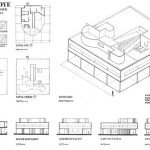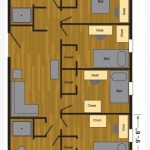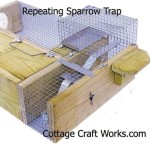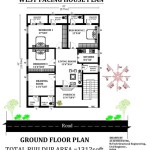Essential Aspects of 1 Story Log Cabin House Plans
1-story log cabin homes evoke a sense of nostalgia and rustic charm. If you're contemplating building one, meticulous planning is crucial. Here are essential aspects to consider when selecting 1-story log cabin house plans:
Log Material: The type of logs used can significantly impact the aesthetic and durability of your cabin. Consider species like pine, cedar, or spruce, which are known for their rot resistance and strength. Determine the log diameter and profile, such as round, half-log, or D-log, to achieve your desired look.
Roof Design: A sloped roof is common in log cabins, providing drainage and a classic aesthetic. Consider the pitch, or steepness, of the roof, as well as the roofing material, such as metal or asphalt shingles. For added charm, incorporate dormers or a covered porch.
Floor Plan: Design a functional floor plan that meets your lifestyle needs. Consider the number of bedrooms and bathrooms, as well as the living space layout. Open-concept designs are popular, allowing for a spacious and inviting atmosphere. Optimize natural light with large windows and skylights.
Log Jointing: Ensure proper log jointing techniques to maintain the integrity and stability of your cabin. Common methods include butt-and-pass, saddle notch, and dovetail joints. Choose a jointing system suitable for the type of logs and climate in your area.
Windows and Doors: Select windows and doors that complement the log cabin aesthetic. Casement or double-hung windows provide ventilation, while custom-made wooden doors are a classic choice. Consider energy efficiency and durability when choosing materials.
Chinking and Caulking: Chinking and caulking are essential for sealing gaps between the logs and preventing drafts. Choose materials like mortar, caulk, or expanding foam that are compatible with the logs and local climate conditions.
Interior Design: Create a rustic and cozy interior ambiance. Exposed logs and beams add character, while natural materials like leather, wood, and stone contribute to a warm and inviting atmosphere. Incorporate antique or reclaimed pieces and handmade crafts to enhance the authenticity.
External Features: Enhance the exterior appeal of your 1-story log cabin with features such as a covered porch, a stone chimney, or a wrap-around deck. These additions provide additional outdoor living space and create a charming and welcoming atmosphere.
Environmental Considerations: Construct your log cabin with sustainability in mind. Utilize energy-efficient materials, incorporate solar panels or geothermal heating systems, and practice responsible water and waste management to minimize the environmental impact.
Building Codes and Permits: Ensure compliance with local building codes and obtain necessary permits before commencing construction. Engage a licensed contractor experienced in log home building to guarantee safety and adherence to regulations.
By carefully considering these essential aspects of 1-story log cabin house plans, you can create a dream home that embodies the rustic spirit and modern functionality.

One Level Floor Plans Log Cabin Cabins For Less

Log Cabin Modular Home Kintner Builder Pennsylvania Quality Prefab Contractor

Clark Mountain 3 Bed 2 Bath 1 Story 2104 Sq Ft Appalachian Log Timber Homes Hybrid Home Flo Cabin Floor Plans Small House

Lakeland Floor Plan Log Cabins For Less

Single Story Log Homes Floor Plans Kits Battle Creek

Hiwassee I 2 Bed 1 Bath Story 780 Sq Ft Appalachian Log Timber Homes Hybrid Home Floor Pl Cabin Plans House

Single Story Log Homes Floor Plans Kits Battle Creek

Fall River Log Home Plan By The Original Lincoln Logs

Single Story Log Homes Floor Plans Kits Battle Creek

If You Re Dreaming Of Having A Single Story Log Cabin With Full Front Porch The Lincoln Is There P Floor Plans
Related Posts








